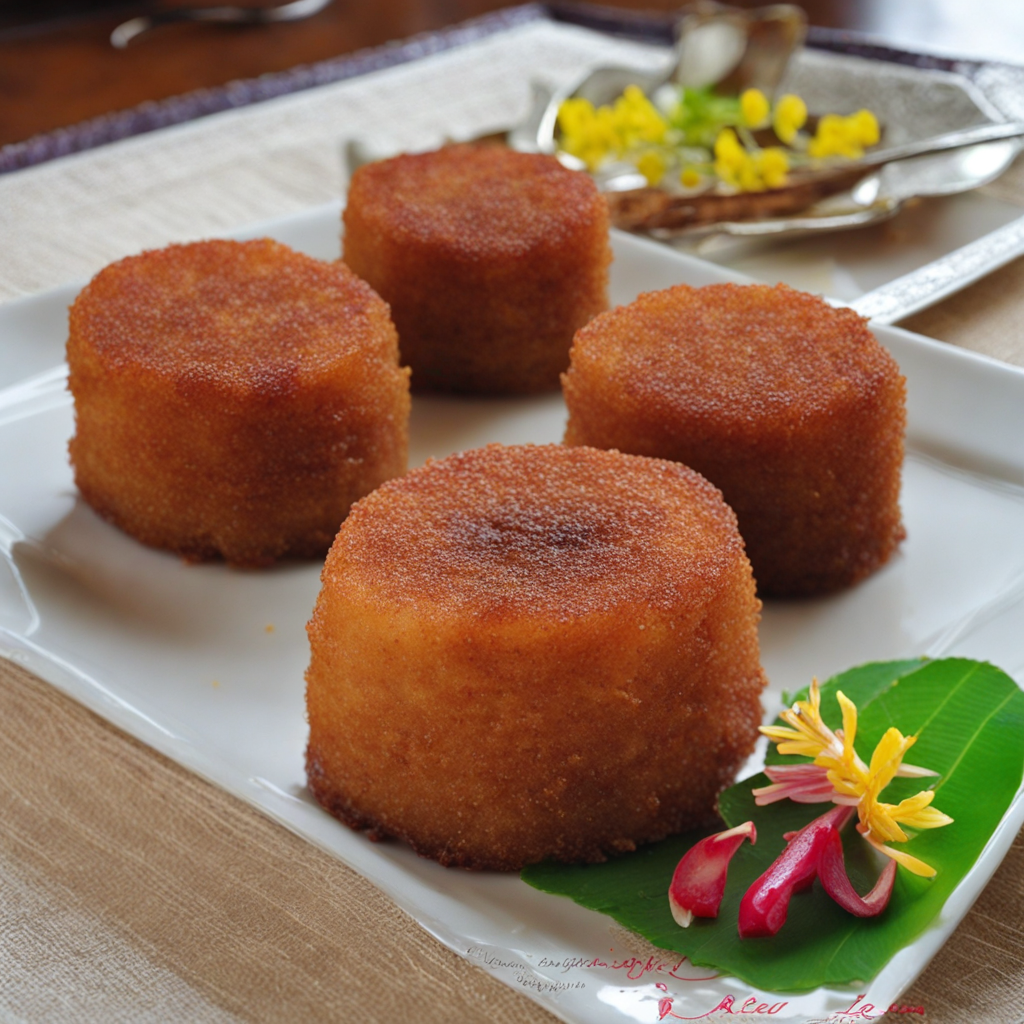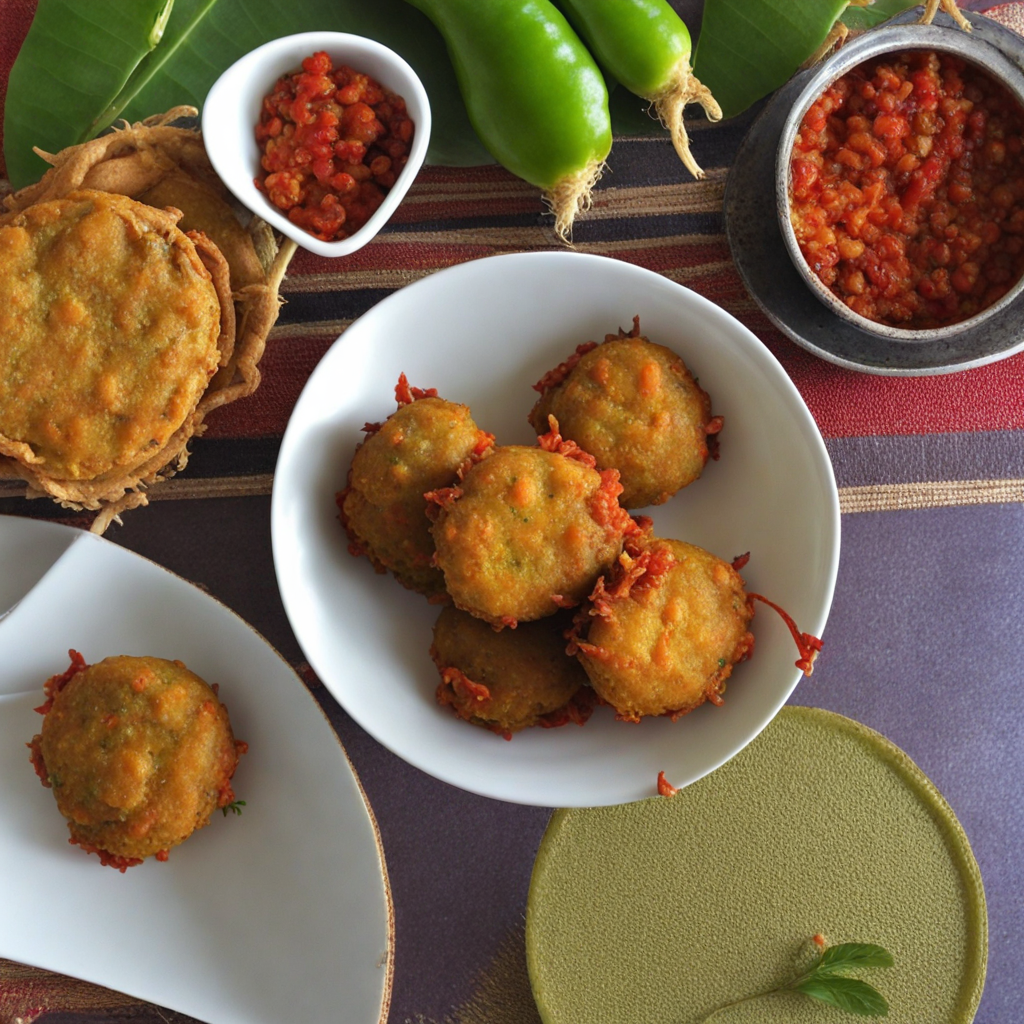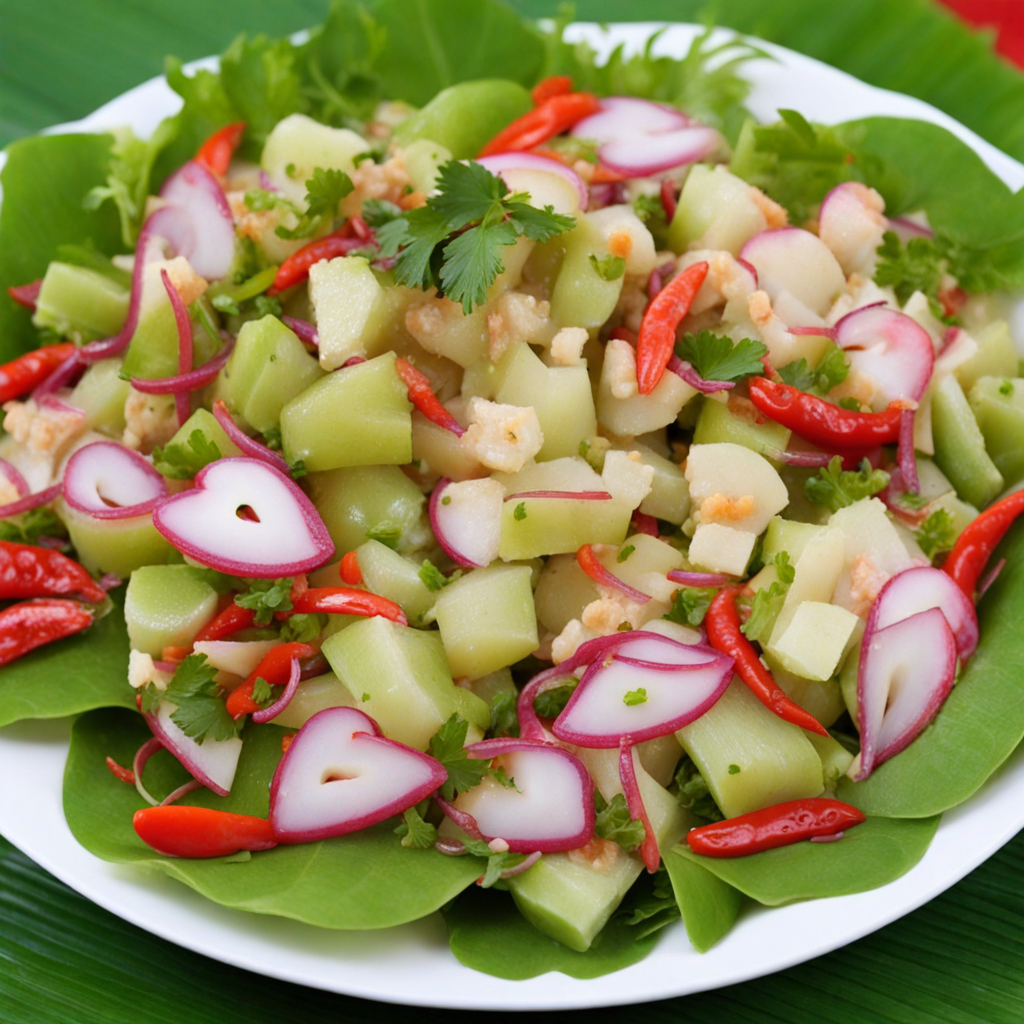Gateau Arbi
Gateau Arbi is a delightful Mauritian dish that exemplifies the island's rich culinary heritage, blending flavors and textures in a unique way. This savory cake is primarily made from grated taro root, known locally as 'arbi,' which gives it a distinct earthy flavor and a slightly chewy texture. The taro is mixed with a medley of spices, including cumin, coriander, and chili, which infuse the dish with warmth and depth, while a hint of turmeric provides a beautiful golden hue. This combination creates a tantalizing taste that captivates the senses and invites you to explore the layers of flavor within. To enhance the dish, Gateau Arbi often includes ingredients like onions, green chilies, and fresh herbs, adding freshness and crunch to the mix. The ingredients are carefully combined and molded into small cakes before being deep-fried to perfection. The result is a crispy outer layer that encases a soft, flavorful interior, making it a perfect snack or appetizer. Served with a tangy tamarind or chili chutney, each bite offers an exciting contrast of textures and a burst of vibrant flavors that encapsulate the essence of Mauritian cuisine. Whether enjoyed as a street food delicacy or at a family gathering, Gateau Arbi represents the heart of communal dining in Mauritius. Its popularity among locals and visitors alike speaks to its ability to bring people together over a shared love for food. For anyone seeking to discover new tastes, Gateau Arbi is not just a dish; it's an experience that showcases the island's cultural diversity and culinary creativity, making it a must-try for adventurous eaters.
How It Became This Dish
The History of Gateau Arbi: A Mauritian Delight #### Origins and Ingredients Gateau Arbi, a cherished delicacy from Mauritius, is a unique cake made primarily from the local taro root, known as "arbi" in the local Creole language. Taro, a starchy tuber native to Southeast Asia, was introduced to the island by early settlers and traders, becoming an integral part of Mauritian cuisine. The island's diverse cultural tapestry, influenced by African, Indian, Chinese, and French settlers, has shaped the flavors and ingredients of its traditional dishes, with Gateau Arbi standing out as a symbol of this culinary confluence. The preparation of Gateau Arbi typically involves boiling and mashing taro, which is then combined with a variety of ingredients such as sugar, flour, coconut, and spices. The inclusion of coconut adds a tropical sweetness, while spices like cardamom and nutmeg provide warmth and depth. The mixture is then shaped into cakes and usually deep-fried until golden brown, resulting in a crispy exterior and a soft, moist interior. This method of preparation reflects the island's love for fried snacks, which are a staple in Mauritian street food culture. #### Cultural Significance Gateau Arbi is more than just a snack; it is a symbol of Mauritian identity and resilience. The dish is often served during celebrations, festivals, and family gatherings, showcasing the warmth of Mauritian hospitality. The act of sharing food is deeply rooted in the island’s communal culture, where meals are enjoyed together, fostering connections among family and friends. The significance of Gateau Arbi is also tied to the island's historical context. As Mauritius transitioned from a sugar plantation economy to a more diverse agricultural landscape, local ingredients like taro gained prominence. The dish represents a shift towards valuing indigenous produce and traditional culinary practices, especially in a world increasingly influenced by globalization. For many Mauritians, Gateau Arbi evokes nostalgia and pride, reminding them of their heritage and the rich history of their land. #### Development Over Time While Gateau Arbi has its roots in traditional Mauritian cooking, its development over the years highlights the adaptability and creativity of the island's chefs and home cooks. The dish has evolved from simple homemade fare to a beloved item on restaurant menus and at street food stalls. The rise of culinary tourism in Mauritius has also brought renewed attention to traditional dishes, encouraging chefs to innovate while respecting the essence of the original recipes. In recent years, variations of Gateau Arbi have emerged, reflecting the influence of international cuisines and dietary preferences. Some modern interpretations incorporate healthier cooking methods, such as baking instead of frying, or experimenting with gluten-free flours to cater to a wider audience. Additionally, fusion recipes may blend traditional flavors with contemporary culinary techniques, further broadening the appeal of Gateau Arbi. The dish has also gained recognition beyond Mauritian borders. As the diaspora community grows and Mauritian cuisine garners international interest, Gateau Arbi has found its way into food festivals and cultural events worldwide. It serves as a delicious ambassador of Mauritian culture, inviting people to explore the island's rich culinary history. #### The Role of Gateau Arbi in Contemporary Mauritius In contemporary Mauritius, Gateau Arbi continues to thrive as a beloved street food item, often sold by local vendors alongside other traditional snacks like samosas, dholl puri, and gateau piments. Street food culture is a vital part of daily life on the island, providing not only sustenance but also a vibrant social experience. Walking through markets and food stalls, the enticing aroma of freshly fried Gateau Arbi beckons both locals and tourists alike, creating a sense of community and shared enjoyment. Moreover, Gateau Arbi has been embraced by a new generation of Mauritian chefs who are passionate about preserving and promoting their culinary heritage. Many have taken to social media to showcase their culinary creations, sharing traditional recipes as well as innovative twists on classic dishes. This digital platform has allowed Gateau Arbi to reach a global audience, inspiring food enthusiasts to replicate the recipe in their own kitchens. The dish's presence at celebrations and festive occasions remains strong. During significant events such as Diwali, Eid, and Christmas, families often prepare large batches of Gateau Arbi to share with loved ones. This practice not only underscores the dish's cultural importance but also highlights the way food can bring people together, transcending boundaries of religion and ethnicity. #### Conclusion Gateau Arbi is a testament to the rich history and cultural diversity of Mauritius. Its origins, rooted in the island's agricultural practices, reflect the influence of various communities that have made Mauritius their home. As the dish has evolved over time, it has maintained its status as a beloved treat, symbolizing the resilience and creativity of Mauritian cuisine. Whether enjoyed as a quick snack from a street vendor or as a centerpiece at a family gathering, Gateau Arbi encapsulates the spirit of Mauritius—warm, inviting, and rich in flavor. As the world continues to embrace diverse culinary traditions, this delightful taro cake stands as a delicious reminder of the island's heritage, inviting everyone to savor a piece of Mauritius.
You may like
Discover local flavors from Mauritius







